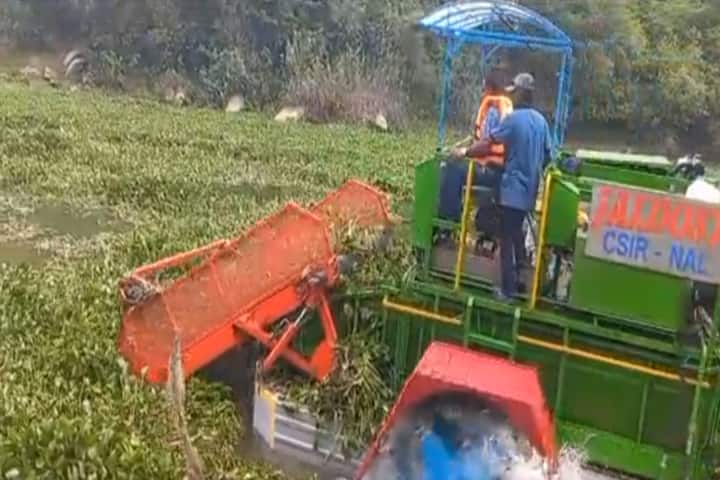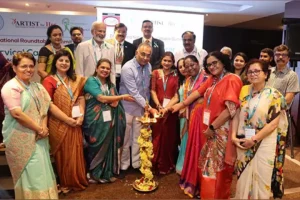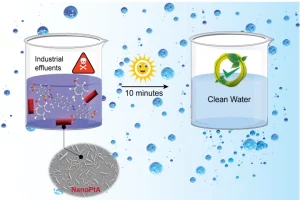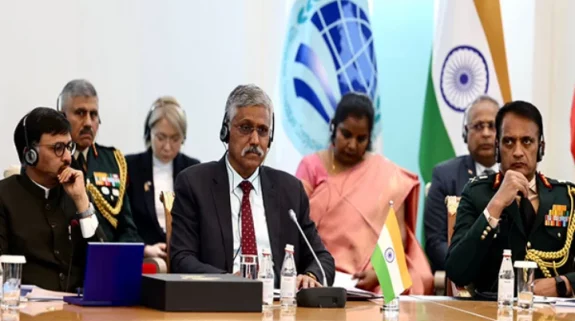It is of prime importance to keep our water bodies clean and free of aquatic weeds and waste, especially the lakes and rivers. For making this exercise easy, the Bengaluru-based Council of Scientific and Industrial Research-National Aerospace Laboratories have unveiled Jaldost.
Jaldost is an airboat that helps in removing the weeds and is powered by an aircraft engine.
JALDOST Mk I flag-off by Dr V K Saraswat, Hon’ble Member, NITI Aayog from CSIR-NAL, Bangalore to CSIR-NEERI, Nagpur during the Curtain Raiser Event of One Week One Lab on August 2, 2023. @CSIR_IND @DrNKalaiselvi @CSIR_NEERI pic.twitter.com/8VqILhbilf
— CSIR-NAL (@CSIRNALOFFICIAL) August 2, 2023
NAL, which is a lab of CSIR, announced the launch of Jaldost as part of the Central Government’s “One Week, One Lab” initiative. The Jaldost has been built as per specifications of Bruhat Bengaluru Mahanagara Palike’s requirements to keep water bodies clean by removing the weeds and waste.
Incidentally, Bengaluru has 190 lakes and this machine will help in the task of keeping them clean.
JALDOST, an indigenous product with Technology from CSIR-NAL, Ministry of Science & Technology, Govt of India, and partnered with Shrivari Engg systems Pvt ltd.
JALDOST, a savior of indian waterbodies eco system.
For further info mail us: sves1hsr@gmail.com pic.twitter.com/IeX3s014VF— Bala (@balasves) June 25, 2023
According to NAL, “Jaldost is developed with indigenous technology to save water bodies and remove excessive aquatic weeds and other floating waste. It has a closed airtight pontoon to make it inherently unsinkable. It has a hybrid propulsion system comprising air propulsion and paddle wheel propulsion. Paddle wheel propulsion is useful for turning manoeuvres and for reversing operations. Air propulsion provides additional thrust to travel faster to shore and return.”
It added that Jaldost has “the ability to travel through weeds makes it an ideal platform to collect them and bring them to the shore. A steel mesh belt conveyor system fixed in the front collects the wastes continuously. The collected waste falls on the horizontal deck conveyor, which holds it on board. After reaching the shore, the collected waste is unloaded by a rear conveyor system to trucks and/or tractors.”
As Jaldost is a special purpose trolley-cum-hydraulic launcher, it can be towed by a tractor thereby reducing the cost of hiring mobile cranes and open-bed lorry trailers required to move it.
The technology of the machine has been developed in-house and it has been built in collaboration with Shrivari Engineering Systems.
Technology Launch of QPlane- All Electric Hubrid UAV in the presence of Dr V K Saraswat, Hon’ble Member, NITI Aayog at CSIR-NAL, Bangalore during the Curtain Raiser Event of One Week One Lab on August 2, 2023.@CSIR_IND@DrNKalaiselvi pic.twitter.com/YcbormICpr
— CSIR-NAL (@CSIRNALOFFICIAL) August 2, 2023
Apart from Jaldost, NAL also unveiled QPlane, an electric unmanned aerial vehicle under OWOL initiative. This is light weight and capable of vertical take-off and landing.
Powered by a lithium polymer battery, the UAV is designed for a 30 kilograms maximum lift-off weight. It can cruise at 23 metres per second and its maximum range is 30 kilometres.
It can be fitted with a camera for imaging or reconnaissance or used for last-mile delivery.




















